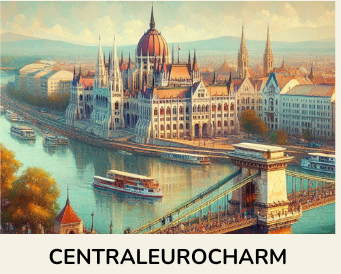Explore Hungary’s rich history — from ancient Magyars and Ottoman rule to revolutions and EU membership. Discover how Hungary shaped Central Europe.
Introduction Hungary’s history is a tapestry of resilience, cultural pride, and survival through centuries of conquest, revolution, and transformation. From the arrival of the Magyars to the 1956 Revolution and modern EU membership, this Central European nation has repeatedly redefined itself. Whether you’re exploring medieval castles or strolling through modern Budapest, history comes alive at every step.
The Arrival of the Magyars and the Birth of Hungary Before the Magyars, Roman Pannonia (now western Hungary) thrived as a trade hub and military frontier. Cities like Aquincum (in present-day Budapest) left behind aqueducts, baths, and roads that would influence future settlements.
Around 895 AD, the Magyars, nomadic horsemen from the Ural Mountains, settled in the Carpathian Basin under Arpád. His dynasty ruled Hungary for centuries. The most notable ruler, King Stephen I, was crowned in 1000 AD. By converting Hungary to Christianity and strengthening Western ties, he laid the foundation for a centralized Christian kingdom. Today, St. Stephen is revered as a national hero and saint.
King Matthias and Hungary’s Golden Age King Matthias Corvinus (r. 1458–1490) led Hungary into a cultural and political Golden Age. He expanded Hungary’s territory through wars against the Holy Roman Empire and the Ottomans. His Black Army, one of Europe’s first professional military forces, protected borders and enforced order.
Matthias was also a Renaissance patron of the arts. He founded the Bibliotheca Corviniana, one of Europe’s greatest libraries, and invited Italian humanists to his court. Despite his effective leadership, his lack of an heir led to instability, yet his reign remains a golden chapter in Hungarian folklore and history.
Ottoman and Habsburg Rule: A Divided Kingdom In 1541, the Ottomans captured Buda, dividing Hungary into three regions: Ottoman central Hungary, Habsburg-controlled western Hungary, and the semi-autonomous Principality of Transylvania. Constant battles and population loss marked this 150-year period.
In 1686, the Habsburgs reconquered Buda, and by the Treaty of Karlowitz (1699), Hungary became part of the Habsburg Monarchy. While Ottoman architecture like Turkish baths remained, the era gave way to centralized Habsburg control, sparking Hungarian resistance.
Revolution of 1848: Hungary’s Fight for Autonomy Inspired by European revolutions, Hungarians led by Lajos Kossuth and Sándor Petőfi demanded autonomy and constitutional reforms in 1848. The April Laws briefly granted self-governance, but the Habsburgs, with Russian help, crushed the movement by 1849.
Ferenc Deák later negotiated the Austro-Hungarian Compromise of 1867, creating the Dual Monarchy. Hungary gained internal autonomy, and cities like Budapest modernized rapidly, becoming a European cultural and economic center.
The Treaty of Trianon: A Nation Reshaped After World War I, the Austro-Hungarian Empire collapsed. The 1920 Treaty of Trianon redrew Hungary’s borders, stripping away two-thirds of its land and population. Millions of ethnic Hungarians were left outside the new borders, triggering long-term national grief and instability.
Hungary joined the Axis Powers during WWII, hoping to regain lost territories. German occupation in 1944 led to the deportation of 400,000 Jews. After the Soviet siege of Budapest, Hungary entered a period of harsh communist rule.
The 1956 Hungarian Revolution briefly challenged Soviet control, but was brutally crushed. Still, it became a symbol of resistance throughout the Eastern Bloc.
From Communism to Democracy In 1989, Hungary was the first Eastern Bloc country to open its borders and transition to democracy. The Iron Curtain fell, free elections were held, and Hungary joined NATO in 1999 and the EU in 2004. Modern Hungary balances its rich cultural heritage with integration into the global economy.
Historic Landmarks to Visit
Aquincum (Budapest): Roman ruins including an amphitheater and museum.
St. Stephen’s Basilica (Budapest): A tribute to Hungary’s first king.
Matthias Church and Fisherman’s Bastion: Gothic-Romanesque symbols of the medieval kingdom.
Buda Castle: Royal palace shaped by both Ottoman and Habsburg periods.
Heroes’ Square: Featuring statues of Arpád and other national leaders.
House of Terror Museum: Documents fascist and communist oppression.
Conclusion: Hungary’s history is a powerful journey of survival, transformation, and pride. From the Magyar tribes to modern-day democracy, Hungary has influenced the heart of Europe for over a thousand years.
To see how Hungary’s layered history comes to life through its capital’s architecture, explore my post on Budapest’s most iconic landmarks and architectural treasures.
